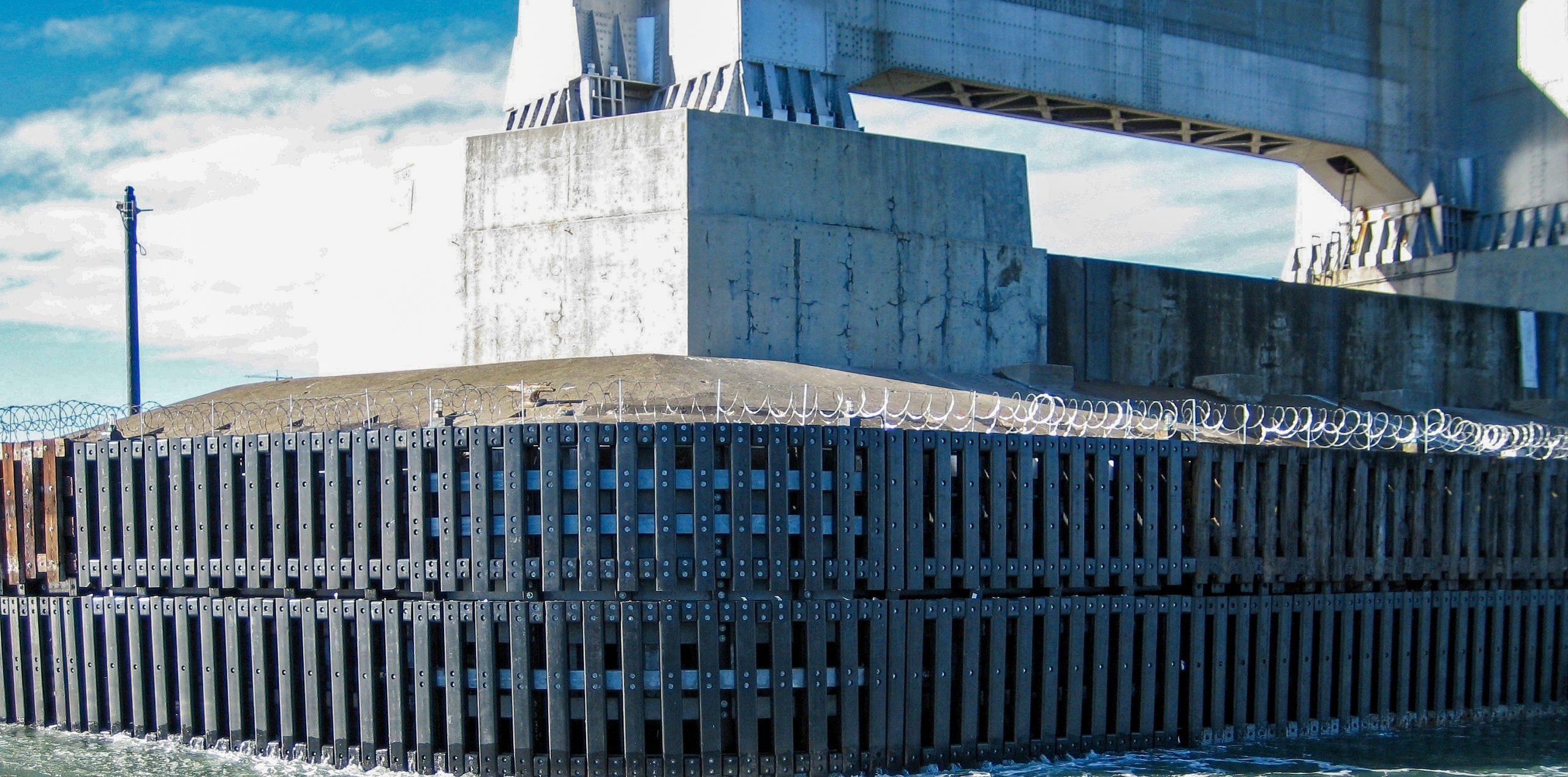Toughen Up Your Marine Projects with Reinforced Structural Plastic Wales

When planning, designing and installing marine industry applications, understanding the environment of the final project is important because it will help determine the type of building material needed to meet the project requirements. This includes weather conditions and getting familiar with the structural requirements. Understanding the project environment is especially important when choosing the right building material for the specific marine application because some perform better than others. Marine projects are in high moisture environments, experience extreme weather like cold, heat, snow, rain and wind, and require high amounts of structural integrity and strength.
Bridge fendering systems are a very common marine industry application. These systems protect the bridge (or larger structure) from boat, vessel, barge and weather damage. Many components make up a fully-operating bridge protection system, including wale beams and piles. Wales take quite a beating and must be durable and strong to protect the bridge over long periods of time. That is why choosing the right building material is so crucial.
Traditional Wood
One of the most common building materials used for bridge protection systems is traditional wood. However, wood has proven to require long-term maintenance because it doesn’t hold up very well in water. Over time, wood will rot, mold and is susceptible to marine borers. Chemical treatment is available to help protect the wood against absorbing moisture, however, this process is harmful to marine life because the chemicals leach into the water. When boats and vessels travel underneath bridges, oftentimes they bump up against the fendering systems which can cause cracks, splintering and breaks. When this occurs, a replacement beam is needed.
Non-reinforced Plastic Wales
Another material option for bridge protection systems is non-reinforced plastic lumber, especially for piles and wale beams. While it is more durable than traditional wood because it holds up in harsh environments and doesn’t break or crack as easily, the chance for catastrophic failure still remains. This is because the non-reinforced plastic lumber structural properties are greater than wood, but it still doesn’t offer the highest level of protection. While it may meet the design and product performance criteria, if you’re looking for the toughest material in the market, consider extra reinforcement with fiberglass polymer rebar.
Structural Plastic Wales
Structural plastic wales are engineered as an ultra-strong, sustainable and reliable building material solution for bridge protection systems. When constructed out of other materials, like wood, the wale beams will not have an added layer of protection against boat and barge damage. Reinforced plastic lumber contains fiberglass polymer rebar which offers residual strength after the impact has occurred. When boats and barges come in contact with the reinforced plastic lumber, the rebar adds resilience and compressive strength. Non-reinforced plastic lumber does not bend or absorb energy as well as reinforced plastic lumber. It also can compromise the aesthetic due to creep and sagging in warmer temperatures. The rebar in structural reinforced plastic wales allows for longer spans because of the extra reinforcement and reliability, giving you not only longer lengths, but peace of mind.
Don’t Let Your Wale Beams Fall Short with Traditional Wood
Contact us today with specific questions! We are here to help.












